John Harvey Miller
- Born: 8 Aug 1867, Ottawa Township, Putman County, Ohio 87
- Marriage (1): Alice Paulina Leary on 8 Aug 1891 in Leipsic, Putnam County, Ohio 86
- Died: 4 Mar 1944, Fenton Township, Genesee County, Michigan at age 76
- Buried: Oakwood Cemetery, Fenton, Michigan

 General Notes: General Notes:
The information here is about different times and provided by different sources. It does not read like a continuous story. I have tried to improve continuity, but it is still in a fairly rough state.
John Harvey Miller was called Harvey by most. He was a strong man of average height. When a shirt was needed, it would have to be made for him due to his husky build. Eldon Coller described Harvey and his son, Clarence, as very muscular "beasts of burden". When Harvey was born forceps were used which caused some disfigurement with one eye. Because of this, most pictures of him were taken from the side. He was a quiet man who did not have much to say unless he felt it was important. Drinking and playing cards were not allowed in his home.
He was a school teacher, a band leader who played the trumpet, a farmer and policeman. Harvey held a "Teacher's Common School Certificate" in Ottawa, Ohio. One of the schools Harvey taught in was called No. 1 Palmer Township. He also wrote articles for the Leipsic Gazette in Ohio. In 1889 he met Alice Paulina Leary of Miller City. He was her school teacher. They were married in 1891.
Before moving to Michigan, Harvey and Alice lived on the Miller family farm located at C and 11A, Liberty Township, Putnam County, Ohio. 40 acres were northeast of the intersection and 80 acres were northwest of the intersection. According to the 1895 Atlas of Putnam County, this land was owned by Harvey's mother, Sarah Ann Miller, who died in 1897. Harvey and Alice had two children, Ethel and Clarence, while living on the Ohio farm. In 1902 they moved to a 120 acre farm in section 26, Lamotte Township, Sanilac County, Michigan where they lived for about 10 years. The 1906 Sanilac County land index states that J. H. Miller owned property in section 26 of Lamotte Township. By current road names, the house was located on the south side of Pitcher between Germania and Wood, southeast of Decker. Pitcher does not run west of Germania. There must have been a drive that continued directly west of the intersection to the home. Harvey's brother, Thomas, had purchased about 520 acres in sections 14, 25 and 26 of Lamotte Township. Thomas moved to Sanilac County in 1903. While living in Sanilac County Harvey organized a band and directed it for 5 years. By 1910 Thomas had moved back to Ohio and in 1912 the Harvey Miller family moved to Flint, Michigan. Harvey was a Flint policeman for 3 years. During this period (1913) Flint purchased their first gasoline powered patrol wagon. In those days it was common for city employees, including police, to be asked by officials to perform personal work for them. The mayor of Flint made such a request of Harvey and he refused. Shortly thereafter his career as a policeman ended. In 1915 Harvey and Alice moved into their home at 1422 Davison Road, Flint, Michigan where they stayed for 17 years. Their Davison home was less than a mile from the southern end of the Buick manufacturing facility. After leaving the police department Harvey worked some odd jobs and then found employment at the Buick plant. Wages paid in 1925 were $1368.12. He was a good carpenter and those skills were useful in building cars at that time. He left Buick around 1926. While living in Flint, Harvey would make "whatnots" (decorative shelves that would mount in the corner of a room). Eldon Coller recalls that when he was about 6 years old, Harvey would load him up with his creations and he would go out in the surrounding neighborhoods to sell them. He would ask 25 cents for the large ones and 15 cents for the small ones.
On a visit to Flint with Eldon Coller he remembered the Davison Road home location with a church just around the corner. John Harvey Miller added a dormer and converted the attic to something liveable for William McKinley Coller and Ethel Miller Coller. It was a two story home with the converted attic on top. The house is no longer there.
The Sanilac Farm - Meg Widmer (Mary Ellen Welsh) provided the following information based upon stories told by her mother: This is what I remember Mom saying: It was a small little house on rather poor land to farm. The floors were dirt and in the spring the carpet was pulled out of the house and put over a fence and beat to get cleaned and aired. The straw that had been put there in the fall was taken out and the dirt floor meticulously cleaned (that must have been a major achievement). Then I think it was lime that was sprinkled on the floor to freshen it up and new straw scattered around. Then the carpet brought back in and placed down again. I cannot fathom how this worked...just remember the story. She told of how Grandpa's work clothes were hung out on the fence to air and be cleaned with the rains. When they butchered, other nearby farmers would come and help. EVERY LAST BIT of the animal was used...I used to get sick just listening to how they made blood pudding and brain sausage, etc. I always had the idea that neighbors really helped one another back then. I know that Uncle Clarence and Mom went to the Brown School not far from their home and of course they went to church, but I don't know which one. Grandma would have made sure they went to church. Grandpa was in the band and believed strongly in the Salvation Army as my mother did . I think I alluded to this before, that Grandma really was not too happy stuck up there "in the woods" as she would say. I am not sure how long they lived there but, judging that Mom was 4 or so when they left Ohio and 11-12 when they moved to Flint, I am guessing they were there 7 years more or less.
With some investigation I found the recipe for Blood pudding. It was made when the hogs were slaughtered on the farm. Although this may sound strange to us today, "Blood Pudding" was a common dish during the earlier part of this century. Following were typical ingredients. 3 quarts pork blood, 1-1/2 pounds raisins, 1-1/4 pounds sugar, 1 pound mixed nuts & chestnuts, 3/4 pound rice, 2 oranges with all rind, 1 pound figs, 1 teaspoon red pepper, 1 teaspoon black pepper, and 2 tablespoons salt bay leaf. Mix all and bake in oven for 1 hour.
During the depression Clarence, Ida, Harvey and Alice decided to join forces to overcome the economic hardships they were all facing. Clarence was looking at uncertain employment and John was 63 years old doing whatever he could to bring in a few dollars. Clarence and Ida could also use a larger home for their family. In 1932 Clarence and Ida sold their home at 2511 Flushing Road and moved into the home of Harvey and Alice. Harvey and Alice moved into property that Clarence owned. The location was called Clairmont Farm #3 - or commonly called the lake place.
The Lake House - primarily from recollections of Eldon Coller and Kenneth Miller with some location details added by Mark Coller. The lake house was on Clairmont Drive (originally Ovid street) which is off of Bennett Lake Road just east of a bridge over a waterway which connects Lobdell and Bennett lakes. The house was close to the intersection of Clairmont and Bennett Lake on 3 acres of land. Life was minimal in terms of food and shelter. The home was not insulated. There was no electricity. Lighting was by kerosene lamps. Cooking was done on kerosene and wood stoves. Heating was by coal or wood. Harvey and Alice lived there for years - summer and winter. For a few of those years Eldon lived with them. Kenneth would sometimes stay with them during the summer. During one or more of those stays Kenneth remembers Eldon teaching him some of the basics of drawing. Chores included growing a garden, raising chickens and renting boats.
There were probably only 1 or 2 boats for rent. At the time local commerce excluded black people. Harvey would rent boats to black people, but it had to be done at night so the community would not be aware.
The garden was 2 to 3 acres in size and tilled by a neighboring farmer in an exchange of favors. The ground tended to be clay and hard to work. Seaweed would be hauled up from the lake and spread over the dirt in an attempt to improve the land. Wood was gathered from the area around the home. The porch was enclosed to privide an additional living area. A room was also added. Clarence brought the lumber. Ed Welsh helped dig the foundation and build the room. Water was originally retrieved from the lake by bucket. The shore was steep and this was difficult. In an attempt to obtain safer drinking water, Harvey sank round drainage pipes vertically, one on top of the other, into the ground until they reached below water level. This was close to a marshy area. A bucket was lowered into the water and pulled up with a stick. It was felt that the natural filtration of the soil around the pipes would help cleanse the water. This was eventually replaced by a well in the same location that was hand driven into the ground and had a hand pump on top. Harvey Miller, Clarence Miller and Ed Welsh worked together to make the well. The house would be north on Clairmont and on the west side of the road. Originally the first house, it is now probably the third or fourth house down the road because the vacant land between Bennett Lake Road and the lake house has been developed. Bennett, Lobdell and Silver lakes are all connected bodies of water. Lobdell Lake is the northern body of water. The body of water the lake house faces was a winding stream until a dam was put up for a mill in Argentine.
Going further north on Clairmont Drive you come to a short road that goes west. This road is now called County Line Road. Harvey Miller had reached an agreement with the County to clear timber for a road there. This is were wood was gathered for stoves and heating the house. An attempt was made to gather as much "squaw wood" as possible. Squaw wood are those branches below the forest canopy that have died and are reachable from the ground.
A recollection of the lake place by Eldon Coller: The military would buy horses and those that were rejected were sold to the public and a lot of farmers would buy them. A neighboring farmer, Nurme, purchased a couple of these horses and Harvey was over helping him tame them. Harvey got kicked in the thigh on the front of his leg in the heavy muscle area. In time "proud" (dead) flesh developed due to the deep bruising. Holes developed in the flesh of his leg that looked like "holes in a bowling ball" and they covered a 10-12 inch area. Alice would use boric acid to irrigate the injury and remove the dead flesh. Though Harvey recovered, from that point on he always had a limp.
Though Harvey and Alice lived most of the time at the lake place, they would also stay with their children, Clarence and Ethel, for periods of time. In 1942 Harvey suffered a stroke which affected the left side of his body. After the stroke he was never able to get around without help. The couple moved to the home of their son Clarence, now located at 12041 Torrey Road, Fenton, Michigan. Fred Welsh remembers Harvey staying at the Armada farm during the summers of 1941, 1942 and 1943. Harvey Miller died at 12041 Torrey Road in 1944. He was the last living member of his family. Alice Leary then went to live with her daughter, Ethel, on her farm in Armada, Michigan. She became ill with cancer. When she could no longer be cared for in a home environment, she moved to a hospice where she died after a difficult fight with the illness.
Note: There are references to the Miller family living in Flint at 1422 Davison Road and 1422 Richfield Road. These are the same location. At some point Richfield Road was renamed Davison Road. 3,88,89

 Noted events in his life were: Noted events in his life were:
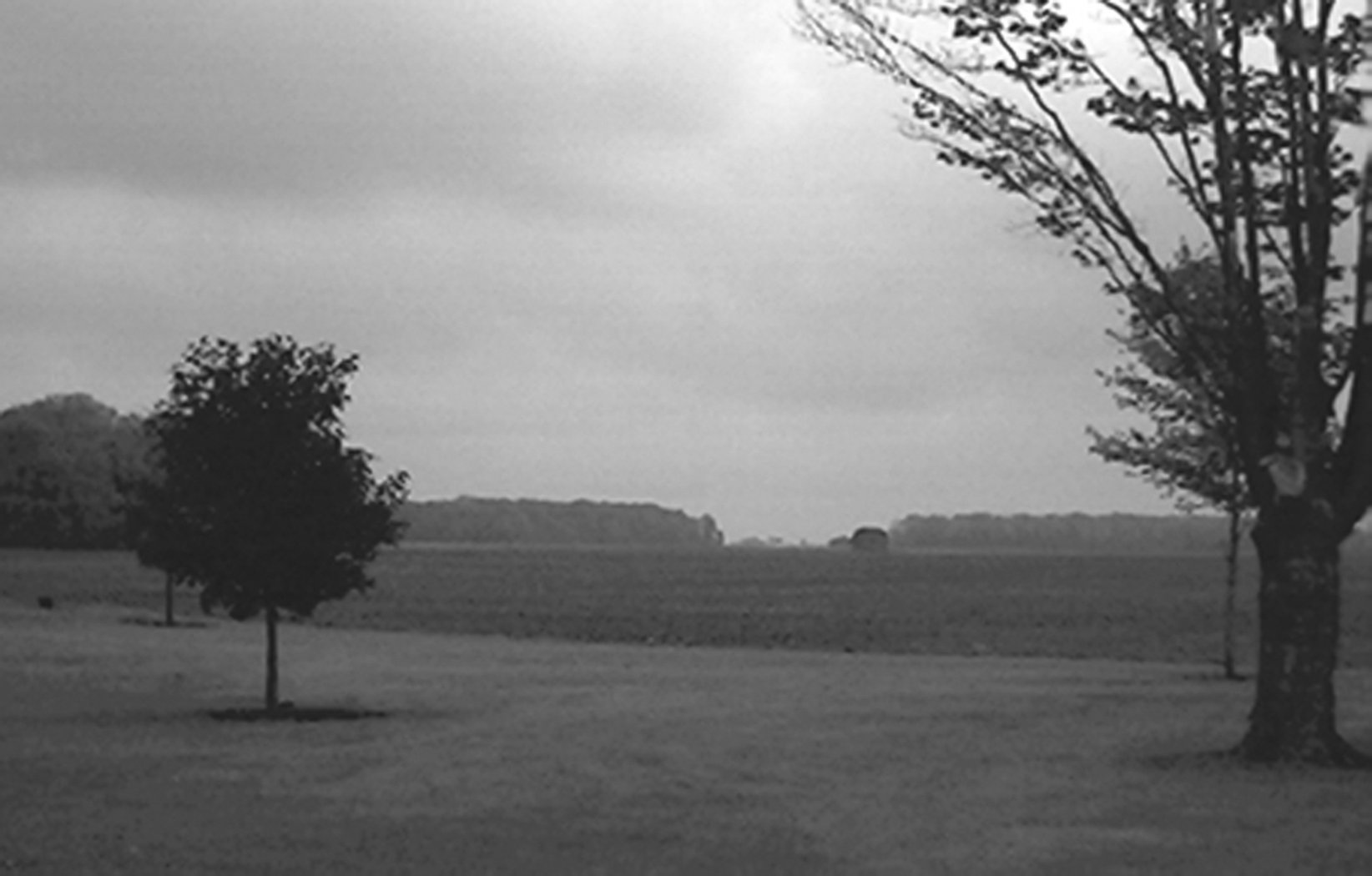
1. Picture, After 1891, Liberty Township, Putnam County, Ohio. Harvey and Alice lived on a family farm located at C and 11A, Liberty Township, Putnam County, Ohio. 40 acres were northeast of the intersection and 80 acres were northwest of the intersection. According to the 1895 Atlas of Putnam County, this land was owned by Harvey's mother, Sarah Ann Miller, who died in 1897. This is a view to the northeast of the intersection.
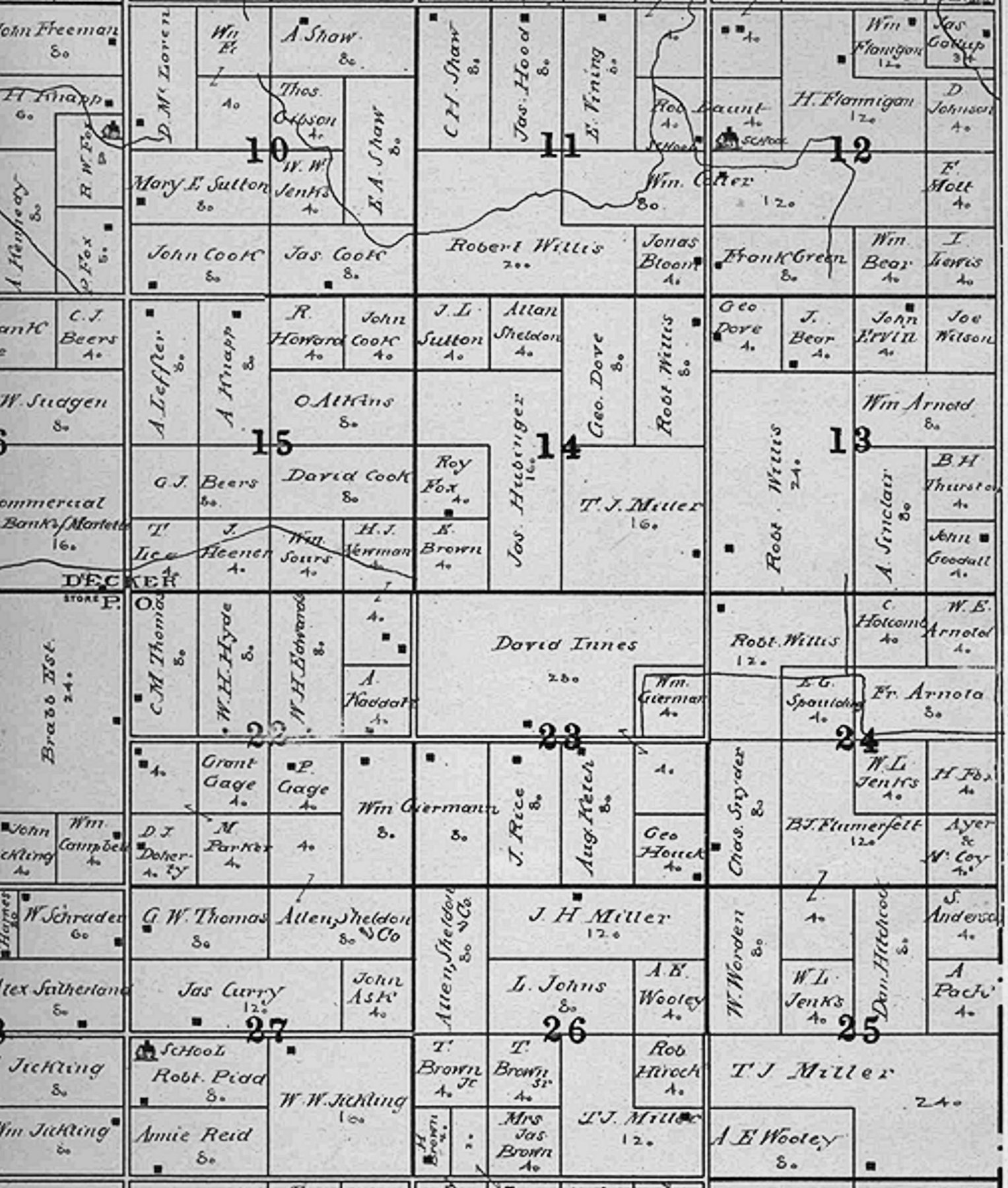
2. Picture, 1906, Lamotte Township, Sanilac County, Michigan. 90 The atlas of Sanilac County lists J. H. Miller as having property in section 26. It is also shown in the 1906 Lamotte Township plat map. The farm was 120 acres. In sections 14, 25 and 26 you see land owned by T. J. Miller. This was John Harvey Miller's brother, Thomas.
3. Residence: 8 Newton Place, Flint, Michigan, 1910. From address and postmarks on mail.
4. Residence: 1159 Chippewa Street, Flint, Michigan, 1911-1914. From address and postmarks on mail.
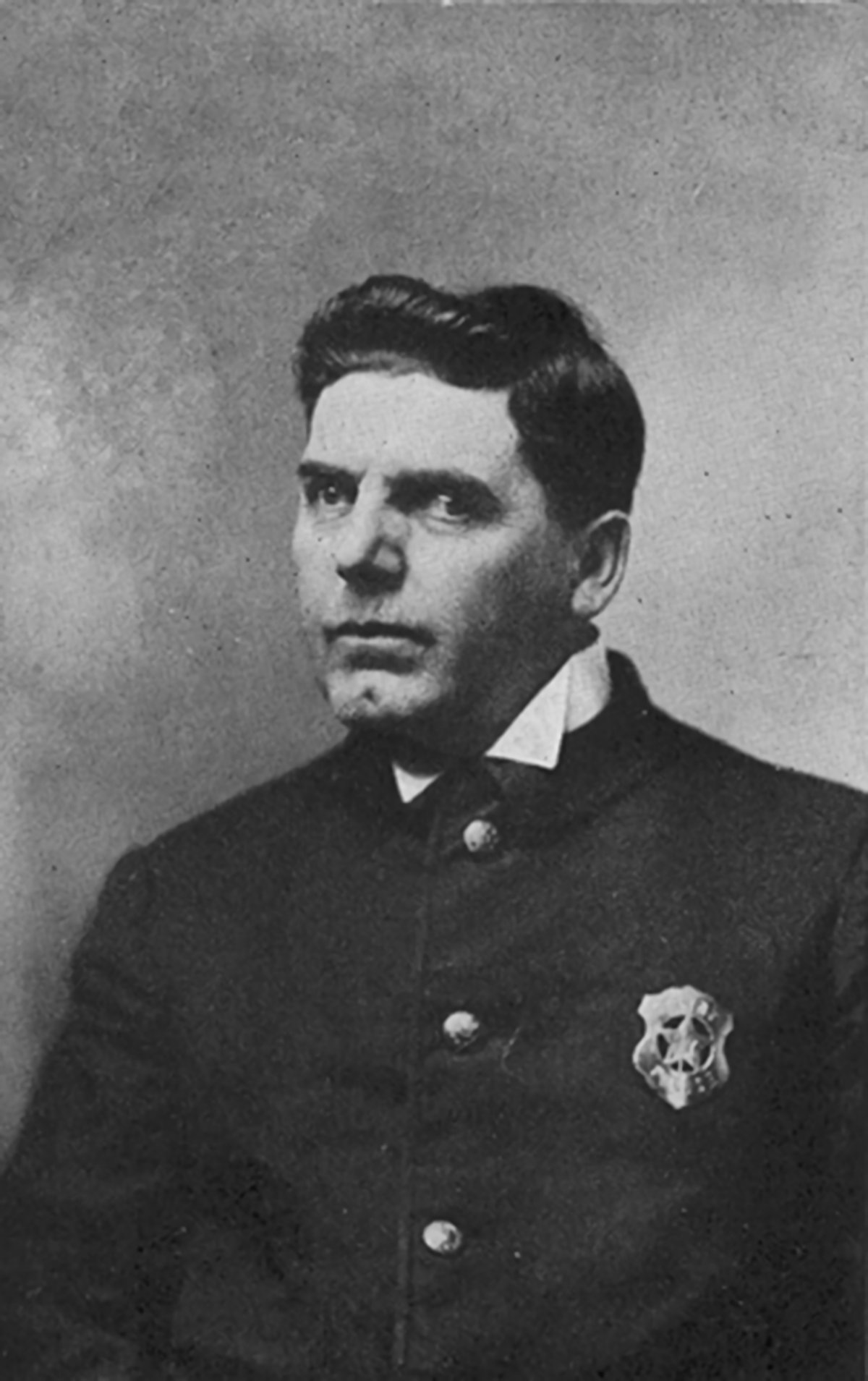
5. Picture: Police Officer, From 1912 to 1915, Flint, Michigan.
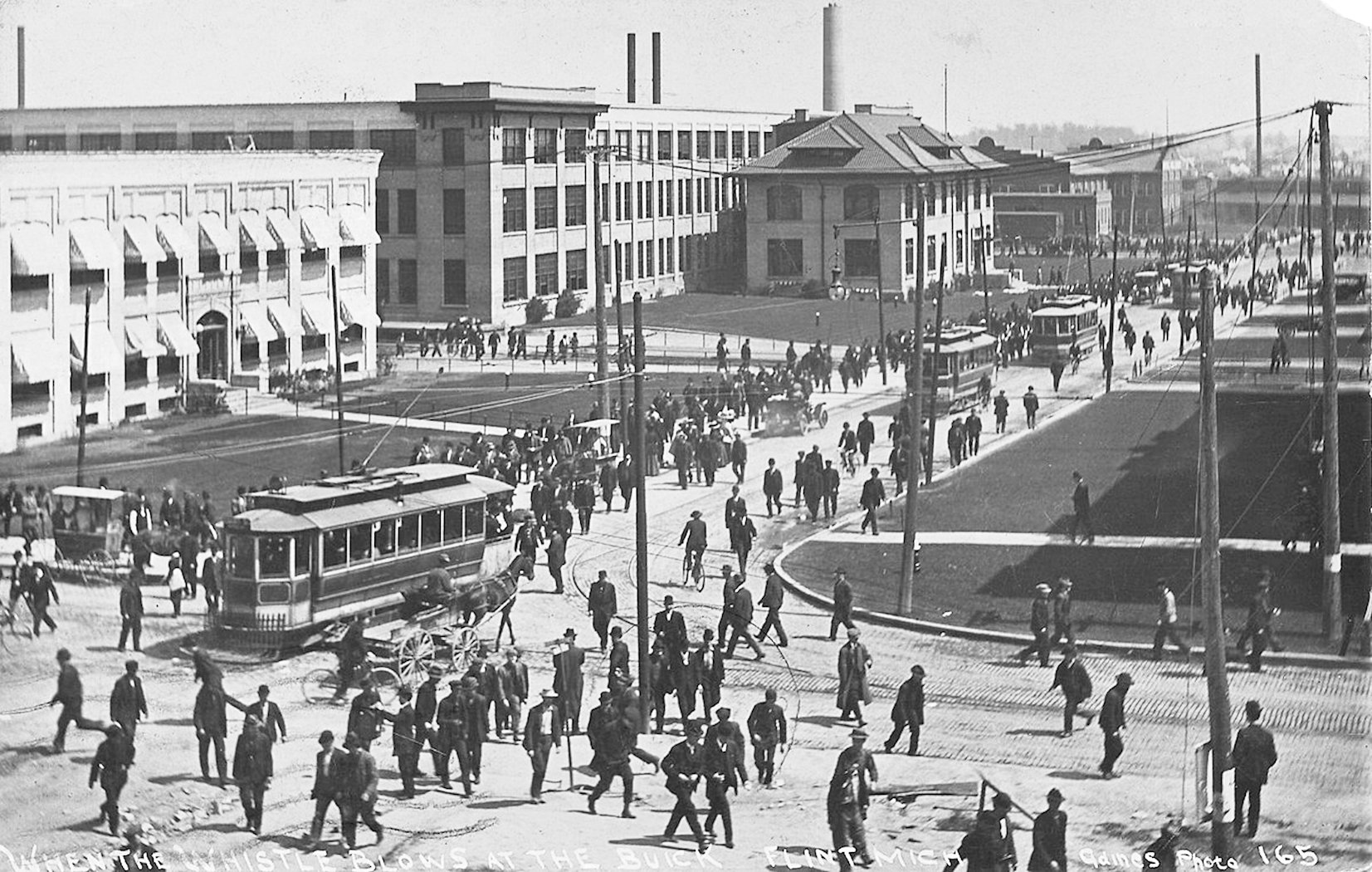
6. Picture, 1915, Buick Plant, Flint, Michigan. This is a picture of the Buick assembly plant in Flint, Michigan at the time John Harvey Miller worked there. Harvey Miller, William Mckinley Coller and Edward Welsh all worked there at one time or another. William Coller would sell insurance to people while working at the Buick Plant.
7. Residence: 412 Albro Place, Flint, Michigan. From address and postmarks on mail.
8. Residence: 1422 Davison Road, Flint, Michigan, 1921-1925. From address and postmarks on mail.
9. Residence: 1422 Davison Road, Flint, Michigan, 1926. From address and postmarks on mail.
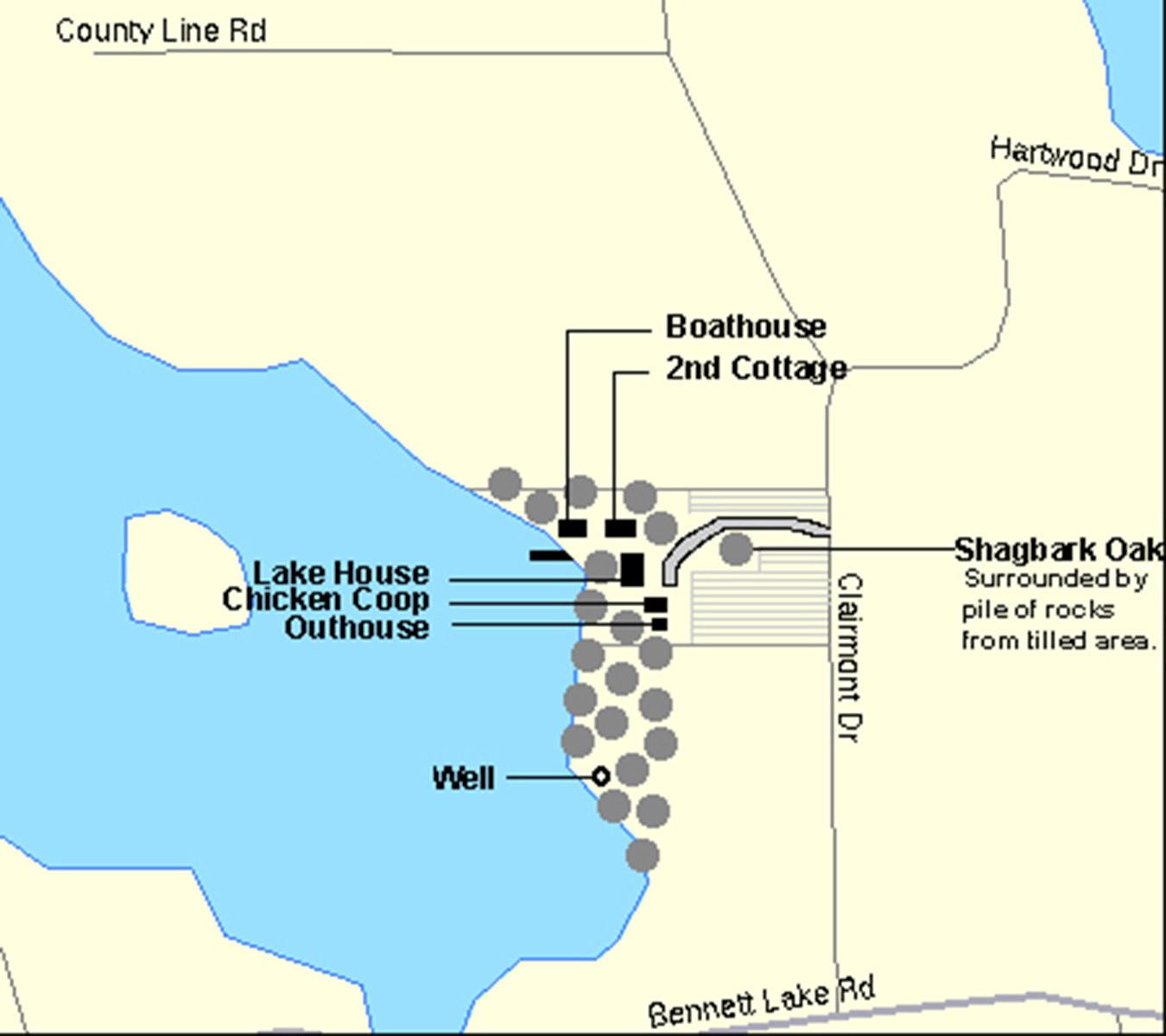
10. Picture: Bennett Lake, Abt 1930-1942. The buildings on the Bennett lake property were rudimentary and any additional construction over time was done by family members. John Harvey Miller and Alice Paulina Leary lived here from about 1930 through 1942.
11. Residence: 1422 Davison Road, Flint, Michigan, 1930. From address and postmark on mail.
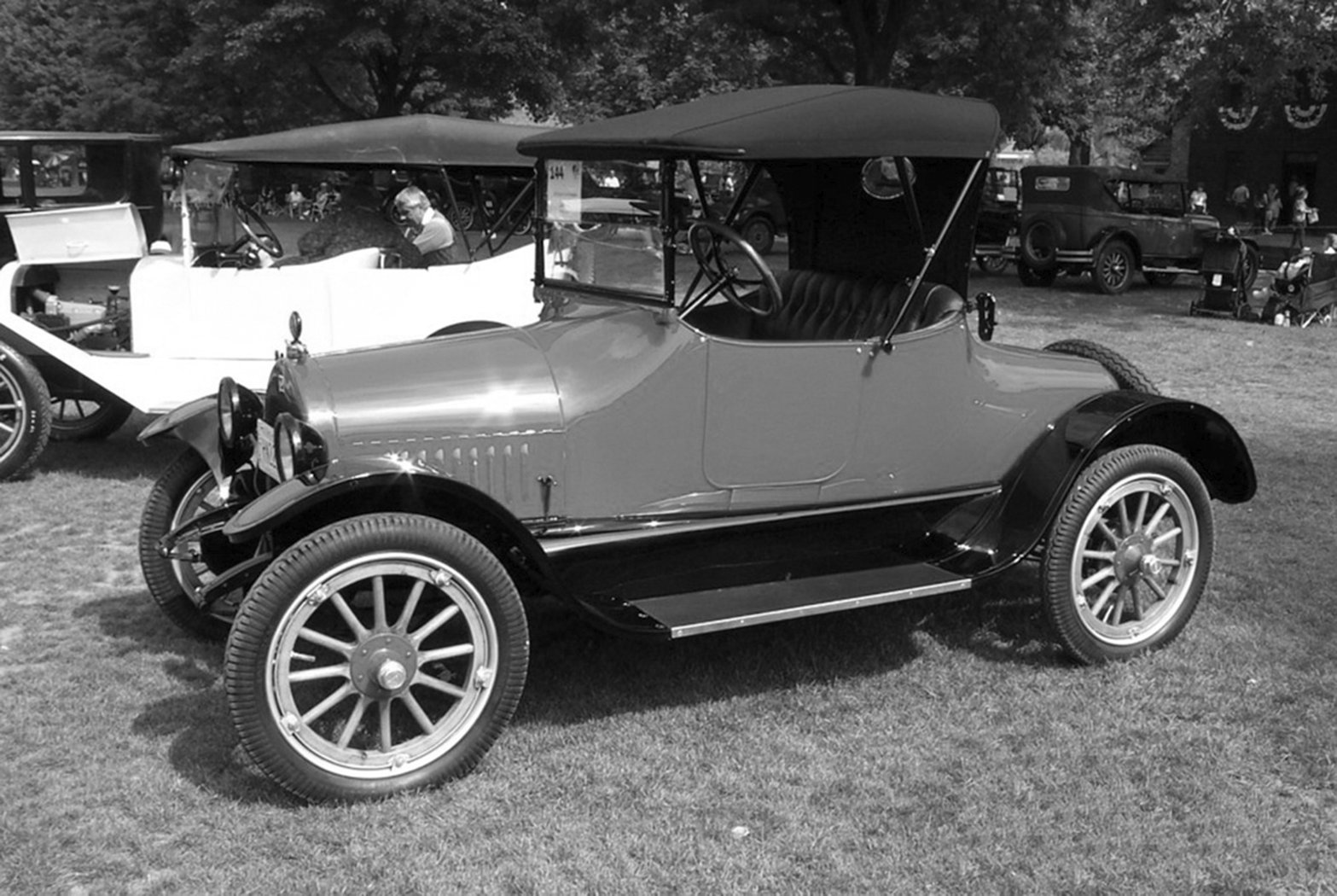
12. Picture: 1916 Buick. This is a picture of one of the cars that was produced at the Flint Buick plant while John Harvey Miller was working there.
13. Residence: 12041 Torrey Road, Fenton, Michigan, 1942-1943. From address and postmark on mail.

John married Alice Paulina Leary, daughter of David E. Leary and Lucinda Jane (Jennie) McCray, on 8 Aug 1891 in Leipsic, Putnam County, Ohio.86 (Alice Paulina Leary was born on 18 Feb 1873 in Vaughnsville, Putnam County, Ohio,91 died on 6 Oct 1950 in Armada, Michigan and was buried in Oakwood Cemetery, Fenton, Michigan.)
 Marriage Notes: Marriage Notes:
John Harvey Miller and his wife, Paulina Leary, were married on August 8, 1891 in Leipsic, Ohio by Elder Hayes (possibly spelled Hays). Their marriage license was granted on August 5, 1891. The marriage certificate was filed on August 30, 1891 in Putnam County, Ohio.
|


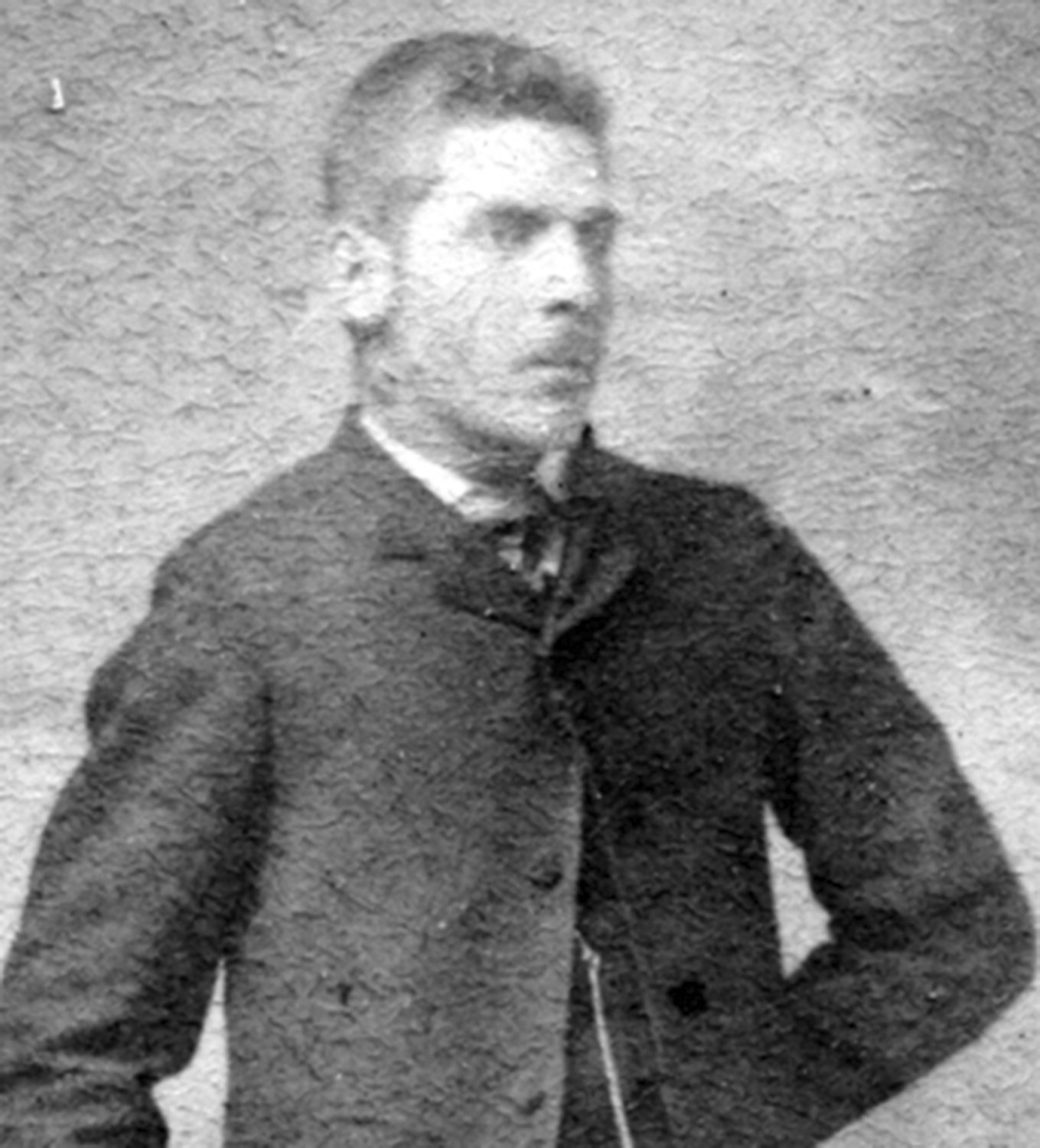






 General Notes:
General Notes: